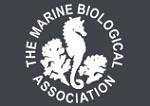APHOTOMARINE
An educational resource dedicated mainly to the photography
and diversity of marine life that can be found in coastal waters
and intertidal areas of Great Britain and Ireland by David Fenwick.

Vesicularia spinosa
- branching habit 1
Ctenostome bryozoan
Vesicularia spinosa
- branching habit 2
Ctenostome bryozoan
Vesicularia spinosa
- under microscope 1
Ctenostome bryozoan
Vesicularia spinosa
- under microscope 2
Ctenostome bryozoan
Vesicularia spinosa
- autozooid 1
The species here was found in human refuse collected during trawling for fish. A single specimen was found entangled in a mass of fishing line and small dead Sea Fans landed at Newlyn, Cornwall, 19.12.17. It is believed it was trawled off the western end of the north coast of Cornwall.
This species is infrequently recorded, it occurs subtidally and on the lowershore on rocks and shells and in bryozoan turf.
Ref: Synopses of the Brtish Fauna (New Series), Ctenostome Bryozoans by P.J. Hayward.
Kind thanks to Marco Faasse and Hans De Blauwe for his help in determining this hydroid-like species of bryozoa.
APHOTOMARINE supports open source data recording and sharing for the benefit of wildlife, recorders, research, science and education. The project recommends the following websites and works with the following bodies and organisations.
The Marine Biological Association or MBA, based in Plymouth, is one of the world’s longest-running societies dedicated to promoting research into our oceans and the life they support. Since 1884 the MBA has been providing a unified, clear, independent voice on behalf of the marine biological community.It has a growing membership in over 40 countries.
The National Biodiversity Network or NBN is a charity that supports open source data sharing and recording supporting conservation, science and education. "Why do recorders need open source?". Simply because it supports the core values of wildlife recording and the free use of records and data over a very wide network that includes partners like the Natural History Museum.
The taxonomy used here is based on that of the following database, which is also used by the MBA, NHM and the NBN.
The World Register of Marine Species or WoRMS.

